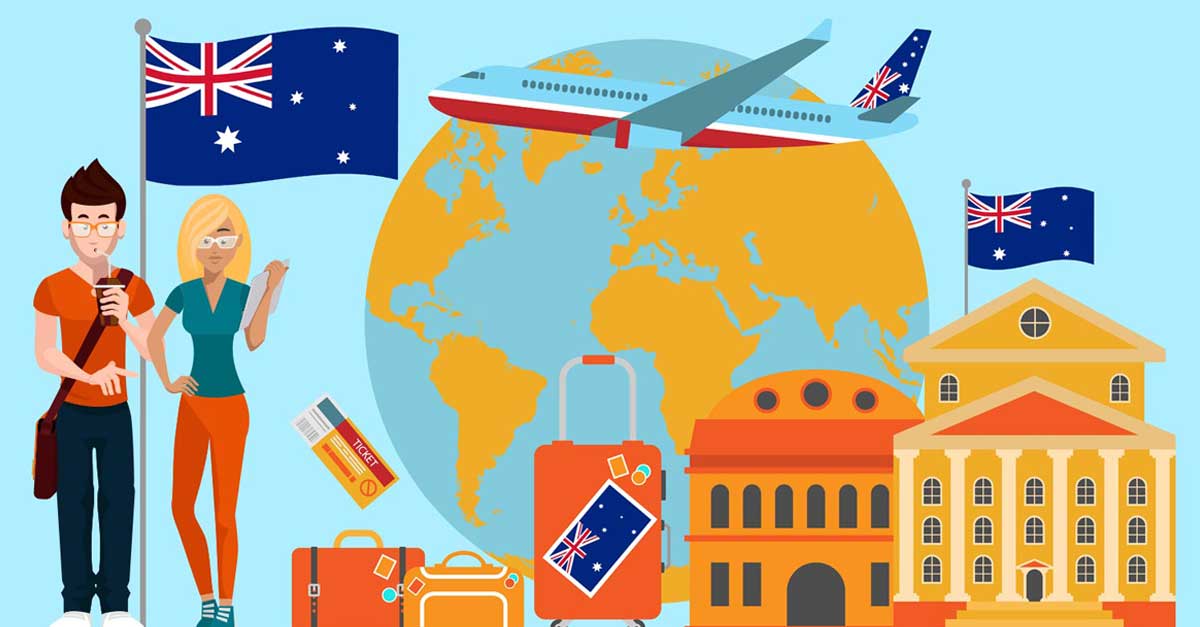Planning overseas studies takes time and prospective students should start their plan in a timely manner. This involves finding a right course and institute, preparing documents, making course applications and applying for a student visa. Visa application processing time alone may take up to six months or more if your document is not ready. This means that you need to start planning your oversees studies when you are towards the end of your current studies. For example, if you want to start your higher education studies right after your high school, you should start planning when you are in year 10 or 11.
You will need the following major steps to plan your studies.
Search for a right course and institute
This is the beginning of your study journey where you can lay down the cornerstone and hence is important to obtain enough information and to make an informed decision. You can find course information from the universities and institutes websites, but you will soon find it challenging and time consuming to navigate from one website to the other, each with a different format of information. To avoid such a challenging approach, you can use Educonnect platform that provides comprehensive information about many courses from various education providers in one place, without the need to navigate individual pages of the providers. In addition, you can use the course comparison feature in this platform to compare similar courses and to choose the one that suits you better. It is important to understand that every student has specific situation and hence you should search for a course that meets your individual circumstances. You may consider the following main items when choosing a course.
- Your education backgrounds and qualifications
- Your English language proficiency
- Your skills and experience
- Your desired area of studies
- Your future employment and lifestyle
- Your budget for oversees studies
- Your family (single, married, spouse and children status)
Preparing documents
Applying for courses and student visa requires certain documents and preparing them in a right format and timely manner plays a critical role in your success.
The main documents that you will need are as follows.
- All education qualifications including your transcripts and the certificates
- English language test results
You need to provide a proof of your English language proficiency in order to get an offer from education providers.
The acceptable tests are as follows.
- IELTS
- TOEFL
- TOEIC
- Cambridge
- PTE
- OET
As a general guide, you will need the following minimum IELTS score to enrol in a degree course in Australia.
| Minimum score | 5.5 |
| Minimum score with at least 10 weeks of ELICOS | 5.0 |
| Minimum score with at least 20 weeks of ELICOS | 4.5 |
For more information, please see the following links.
If you have not taken any English test, search for a reliable test organizer to sit for a test. Consult with Educonnect advisers for guidance or to book a test.
Financial status
You need to ensure that you can afford the cost of your overseas studies including tuition fees and the living costs in Australia. Tuition fees depend on your intending course, and you can find it as part of course information when searching for courses. It may range from around $1000 for short courses to tens of thousands of dollars for masters and PhD courses. The average annual living costs for a single student in Australia is approximately $21,000. You can provide various sources to support your applications as follows.
- Your personal income and savings (bank account deposits) and investments (properties, shares, etc.)
- Parent's support (Statements to show their income, savings, and investments)
- Partner support (Statements to show his/her income, savings, and investments)
- Scholarships- This may be from your own country or from Australia. When searching for courses, check for this information or ask Educonnect advisers for guidance.
Statement of Genuine Temporary Entrance (GTE)
Australian government requires overseas students to enter Australia genuinely for their studies as part of their visa requirements. This is a statement that you will need to explain your genuine intention of your studies in Australia. The main points to cover in your GTE statement are as follows.
- The connection between your previous studies and the intending studies
- The connection between your intending studies and job opportunities
- Job offers or job opportunities in your country after graduation from Australian universities
- Incentives to return to your country (family, business, cultural and society ties, your contributions to your country, etc.)
- Reasons for not pursuing your intending course in your own country
- Your migration history
You can find more about GTE in the following link.
https://www.educonnect.com.au/blog/1-genuine-temporary-entrant-requirement/
Identity documents
Identity documents are to show your identity and generally includes birth certificates, identity certificates, identity cards, and deriving licenses and passports.
Travel documents
The travel document allows you to travel from your country to your study destination country. This is generally your passport issued by your government. If you don't have one, you should apply from your own government. Also make sure that it is valid for at least six months from when you make a visa application.
Resume or CV
Resume is a summary of your professional profile, and some institutes may require it, particularly for master and PhD degrees. It is important to prepare it in a professionally well-presented format. It includes all your education and employment background, skills and experience, ideally in a chronological order.
Translation of documents into English
Australia is an English-speaking country and hence you need to provide all your documents in English. If your documents are not in English, you will need to translate them by a recognised translator. Translators that are certified by NAATI are recognised by the Australian government and you may find these in your country. Otherwise search for other official translators in your country or consult Educonnect for assistance.
High quality copies and certifications
Provide high-quality copies of your documents and keep the originals with yourself. In some cases, you will be required to certify the copies by a recognised certifier. This might be a Public Notary Officer, a JP, or other authorities in your country.
Preparing and lodging course applications before the deadline
To avoid any delay and to minimize the risk of rejection provide all documents as per the course requirements and before the closing dates. For this reason, make sure to meet the deadline and do a checklist before submitting your application. To ensure collecting all documents in one place, upload your documents into your Student Portal in Educonnect and consult with Educonnect advisors to check the integrity of your documents. Next, start the lodgement by filling in the application form and attach all the required documents and then submit. If you are not confident to prepare or lodge your application, consult with Educonnect advisers for assistance.
Receive offer letters and Confirmation of Enrolment (CoE)
Once education providers have accepted your application, they will send you an offer letter, including details of your course and the tuition fees. You will need to pay the requested amounts, sign the offer letter and send it back to the education provider. Upon receiving the payment and the signed offer letter, the education provider will send you a Confirmation of Enrolment (CoE). This means that you are ready to proceed with your visa application.
Overseas student health Cover (OSHC) insurance
It is part of student visa requirements in Australia to have a health insurance during your studies in Australia. All information about how to obtain the OSHC and the fees are generally provided by the education provider along with your CoE, otherwise ask Educonnect for help. Make sure to pay and obtain this document as you need to include it with your visa application.
Visa application
Once you have received your CoE, you can prepare your visa application. This application is to be lodged to the Australian Department of Home Affairs following the instructions determined by the Australian Migration Regulations. Unless you need a specific document based on your individual circumstances, the documents mentioned above will be sufficient for your visa application.
This is all you need to roadmap your studies to Australia. Start planning sooner rather than late as opportunities come and go and it is up you to use them before they disappear. Good luck with planning your study roadmap!
Educonnect's services help you find the best university for your goals, apply for a program, and even speak directly with education providers. Sign up today to see how we can support your international education journey from discovery to application.
Related Blogs
-

Genuine temporary entrant requirement
All non-Australian citizens intending to study in Australia, are required to show that they are comi .....
-

The journey of searching for right courses
Studying abroad can be a life changing journey and hence it is important to find the course and ins .....
-

Everything you need to know about Australian Student Visa (Subclass 500): Rights, Requirements and Fees
Planning to pursue higher education in Australia? Don't know how student visas work? Look no further .....